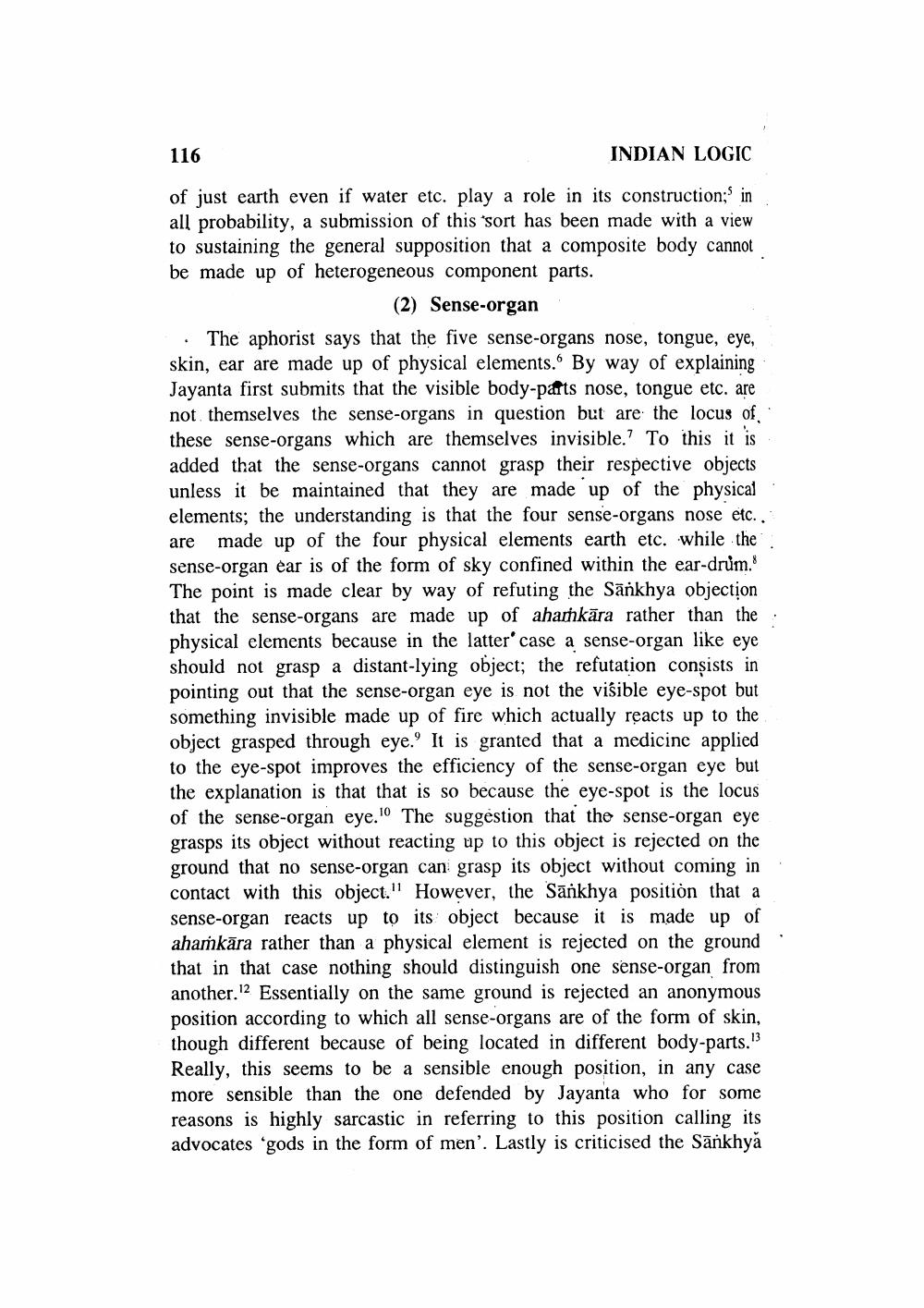________________
INDIAN LOGIC
116
of just earth even if water etc. play a role in its construction; in all probability, a submission of this sort has been made with a view. to sustaining the general supposition that a composite body cannot be made up of heterogeneous component parts.
(2) Sense-organ
The aphorist says that the five sense-organs nose, tongue, eye, skin, ear are made up of physical elements." By way of explaining Jayanta first submits that the visible body-parts nose, tongue etc. are not themselves the sense-organs in question but are the locus of these sense-organs which are themselves invisible.' To this it is added that the sense-organs cannot grasp their respective objects unless it be maintained that they are made up of the physical elements; the understanding is that the four sense-organs nose etc.. are made up of the four physical elements earth etc. while the sense-organ ear is of the form of sky confined within the ear-drum.' The point is made clear by way of refuting the Sankhya objection that the sense-organs are made up of aharhkära rather than the physical elements because in the latter' case a sense-organ like eye should not grasp a distant-lying object; the refutation consists in pointing out that the sense-organ eye is not the visible eye-spot but something invisible made up of fire which actually reacts up to the object grasped through eye. It is granted that a medicine applied to the eye-spot improves the efficiency of the sense-organ eye but the explanation is that that is so because the eye-spot is the locus. of the sense-organ eye. The suggestion that the sense-organ eye grasps its object without reacting up to this object is rejected on the ground that no sense-organ can grasp its object without coming in contact with this object." However, the Sankhya position that a sense-organ reacts up to its object because it is made up of ahamkara rather than a physical element is rejected on the ground that in that case nothing should distinguish one sense-organ from another.12 Essentially on the same ground is rejected an anonymous position according to which all sense-organs are of the form of skin, though different because of being located in different body-parts." Really, this seems to be a sensible enough position, in any case more sensible than the one defended by Jayanta who for some reasons is highly sarcastic in referring to this position calling its advocates 'gods in the form of men'. Lastly is criticised the Sänkhya




